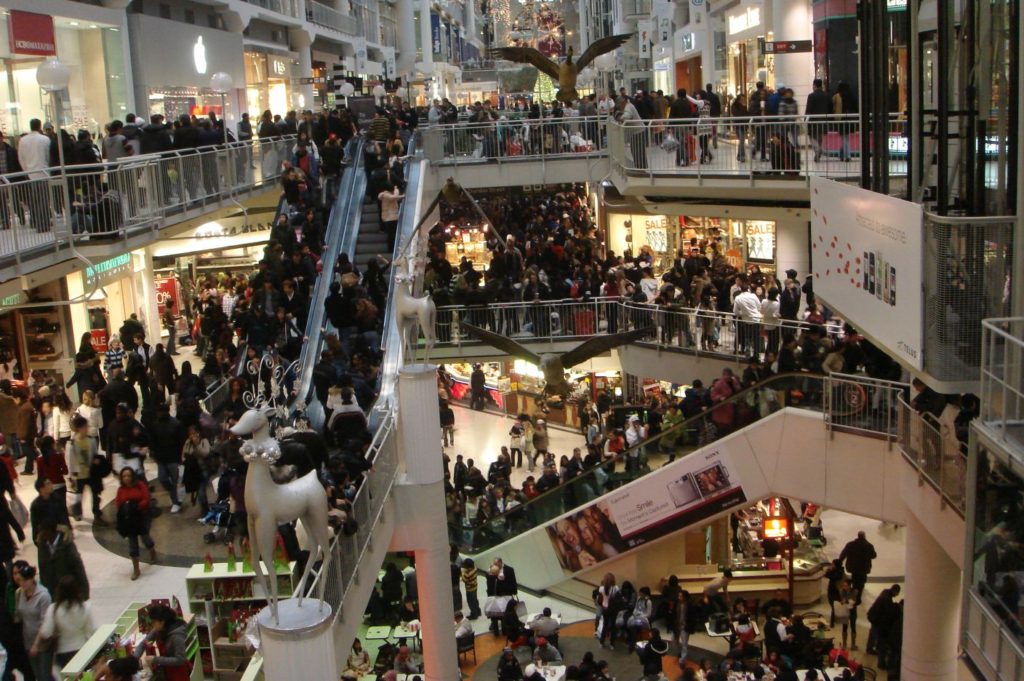How retailers encourage consumers to buy more and feel good about it.

January sales, hate them or love them, there’s no denying it’s hard to escape the temptation of one-off, not to miss, post-Christmas bargains that hit our streets and screens as soon as most of us have even had time to process that Christmas day is over. But why are we so enticed into buying things we’d have probably never considered otherwise and most likely do not need, particularly after the indulgence of Christmas? The answer lies in psychology. This article looks at seven psychological processes that retailers leverage to their advantage to influence consumer behaviour.
Our attention is highly selective
If we were to attend to everything in our environment, we’d never get another done. Instead, we’re constantly filtering out information. This means capturing consumers’ attention can be quite the challenge. But it’s something that retailers have achieved very well with January sales. The constant marketing material plastered all over shops’ stores and websites makes them almost impossible to ignore. The chances of consumers taking advantage of the sales will be heavily increased simply because it’s been put into their focus of attention.
We seek to avoid losses
Imagine this scenario: you see an item you’ve been wanting for ages on sale, it’s half price, the sale ends in 30 minutes, there’s only 2 left in stock, if you don’t act now you’ll miss out on the deal, you might regret it later. This scenario is a textbook case of loss aversion; a hardwired human tendency to be averse to losses and actively seek to avoid them. It’s why when you lose something you can’t stop thinking about it, even though you may not have used it for ages. And why playing hard to get can increase attraction; people don’t like feeling that they may be missing out on something. The very nature of January sales – the fact they are limited time offers – plays on this tendency, by instilling a fear of potential loss and anticipated regret.
We place value on rare items
Limited stock levels also tap into another psychological process; they evoke a sense of scarcity. Humans are hardwired to perceive rare items as more valuable. This isn’t always the case – a unique leaf is unlikely to be appealing just because it’s one of a kind – but if the item is already desirable we’ll value it even when it’s scarce compared to if it was in abundance. In many ways this makes a lot of sense; rare items, such as precious stones, often are more valuable. However, in the case of, retailers can use this tendency to their advantage by artificially creating scarcity so shoppers perceive the items as more valuable.
We look to others to guide our behaviour
As social animals, humans look towards the of others as guidance as to what is safe and socially acceptable. this worked to our advantage; if we saw others eating berries without any adverse effects we could quickly infer it was safe for us to do so too. During January sales, the same sense of social proof is apparent; website pages crash because they are so busy, checkout queues snake through stores, and when retailers notify consumers that stocks are low not only does it make items more scarce, it also suggests lots of people have already purchased them. This social proof is a powerful way to encourage; if people believe everyone else is getting involved in post-Christmas sales or purchasing the item they had their eye on, they’ll be more inclined to make the purchase themselves.
Once we’ve committed it’s hard to let go
The hunt for something that catches our eye often involves tediously wading through rail after rail of sale items (or page after page, online). Once we do stumble across that needle in a haystack item we’ve already committed a lot of resources (in this instance, time and effort) finding the product. Psychologically speaking, this ‘commitment’ makes us more inclined to continue with the purchase to avoid the invested resources being ‘wasted’. This notion, known as the sunk cost fallacy, can be particularly prevalent in January sales as the sheer size and number of sales often require increased ‘dedication’ from consumers.
We seek pleasure
Another, somewhat scary, reason post-Christmas sales can be so enticing is because they influence us at a neural level. When we get a good deal, dopamine is released sending a feel-good rush through our bodies which works to reward the purchase. Most people will probably be able to recall a time they felt good after buying something or went shopping to cheer up. January sales intensify this feeling of reward by encouraging consumers to perceive purchases as good deals. Countless studies have shown the power rewards encouraging. In the case of post-Christmas sales, this surge of dopamine is acting as a reward, motivating consumers to keep on shopping.
We misattribute our feelings
We often mistake our feelings about one thing with how we feel about something else. Ever noticed that everything seems a lot more positive on a sunny day? This is misattribution. Numerous studies have demonstrated the influence of misattribution on consumer behaviour; factors such as mood, music, smell and lighting can all encourage consumers to spend more. In the context of January sales, the marketing, busy stores and promise of a good deal create feelings of excitement which become misattributed to the products on offer. Even a knitted snowman scarf and matching hat might seem desirable amongst the buzz of a post-Christmas sale.